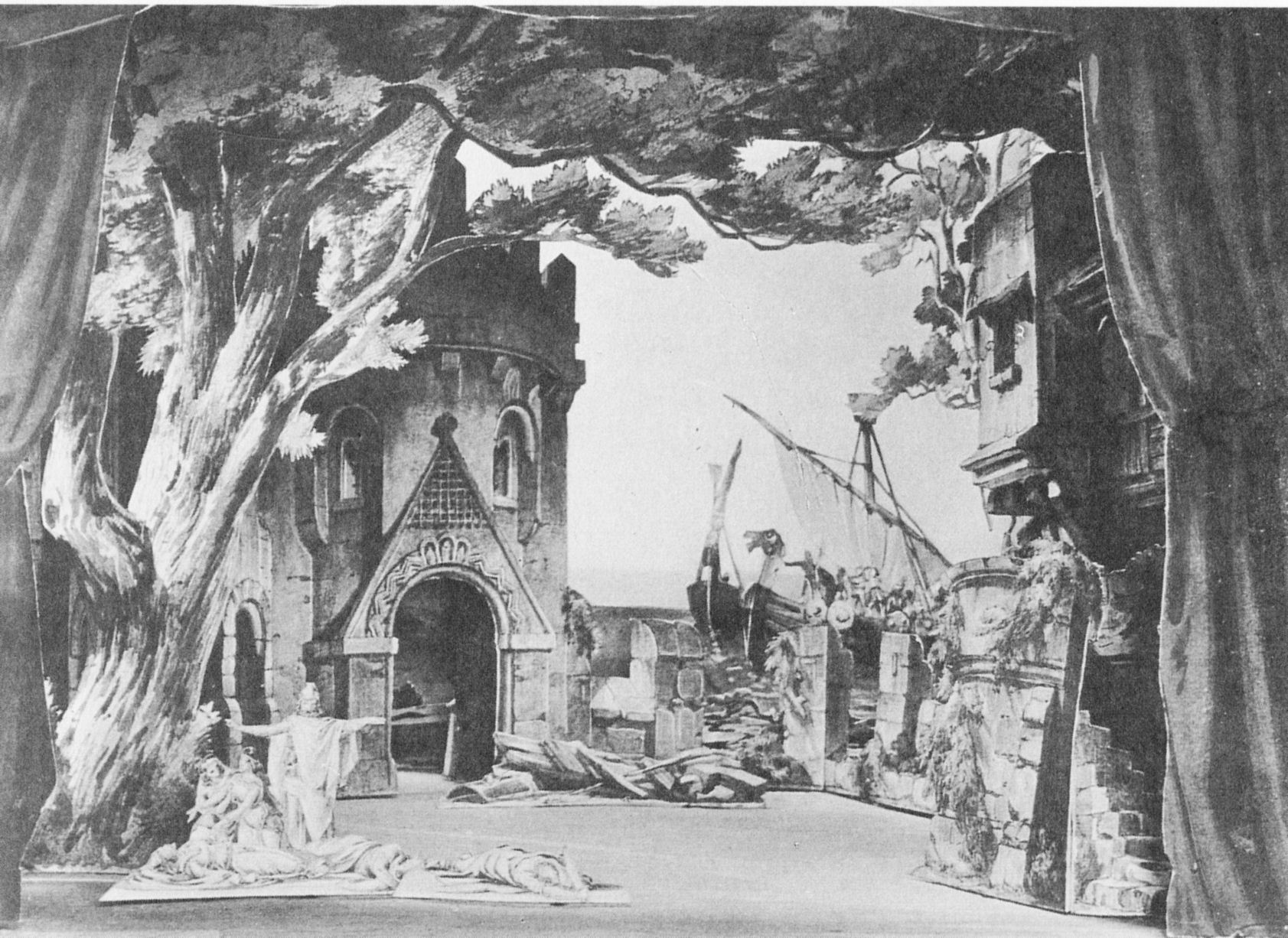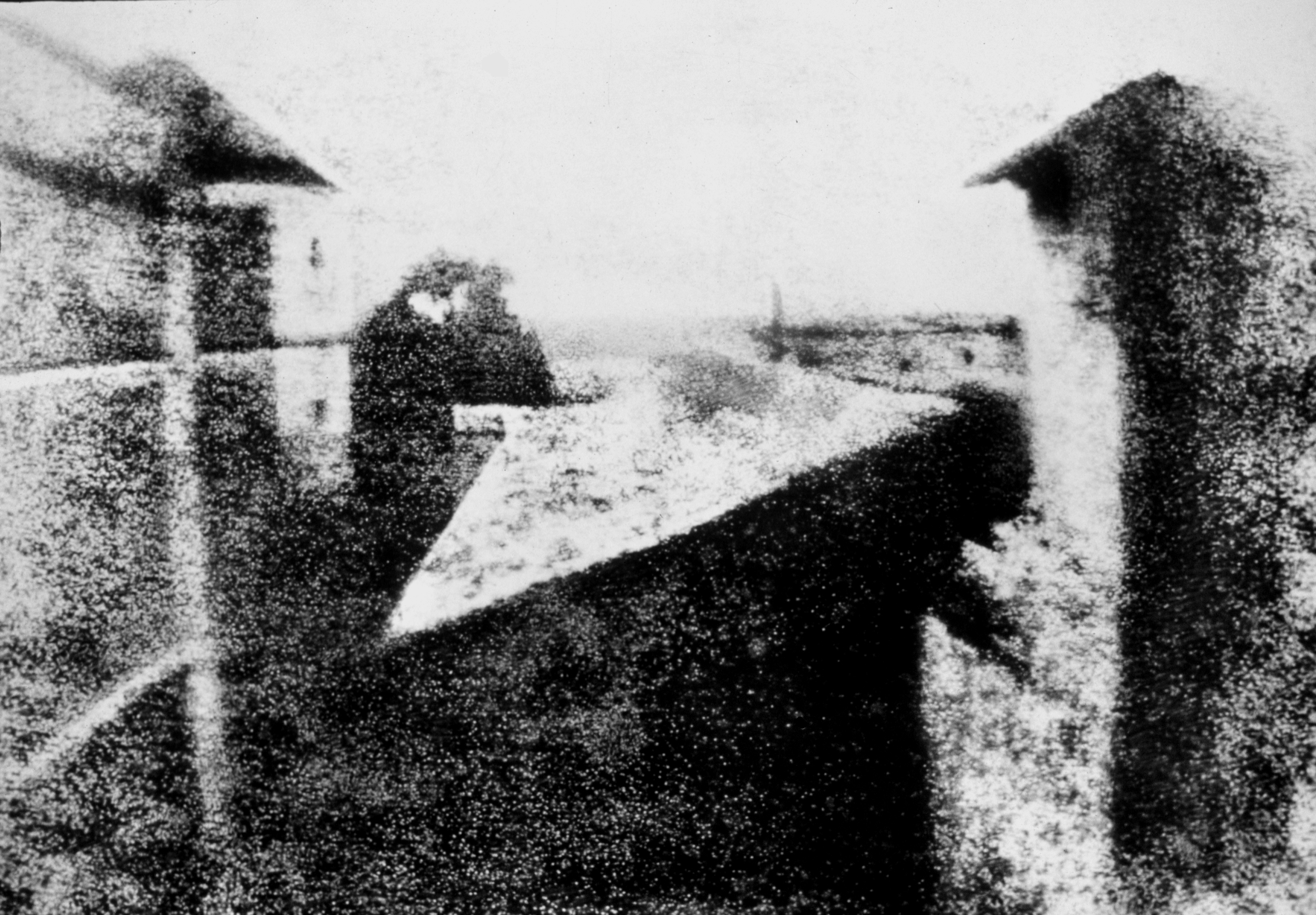72
What rock music seems to offer (and indeed what Wagnerian opera offered to the nineteenth century German audiences, or flute music in the Lydian mode to Plato's Greeks) is pure experience, pure authenticity, real in a sense that the listener's perception cannot itself be deceived.
What rock music seems to offer (and indeed what Wagnerian opera offered to the nineteenth century German audiences, or flute music in the Lydian mode to Plato's Greeks) is pure experience, pure authenticity, real in a sense that the listener's perception cannot itself be deceived.
 Source type: picture
Source type: pictureInfo: 3-dimensional model by Angelo Quaglio for the set in act 3 at the premiere production of Richard Wagner's Tristan und Isolde on 10 June 1865 in Munich
Original size: 1683x1226 px. Edit
Photography provides an important example of the social debate that can surround the logics of immediacy and hypermediacy. When Niepce, Daguerre, Talbot, and others claimed immediacy for their new medium, they were seeking to control its social construction. A long and complicated debate followed, with important figures such as Baudelaire arguing in opposition, but in general the case for immediacy succeeded, and Western societies accepted the idea that a photograph truly captures the world.
Photography provides an important example of the social debate that can surround the logics of immediacy and hypermediacy. When Niepce, Daguerre, Talbot, and others claimed immediacy for their new medium, they were seeking to control its social construction. A long and complicated debate followed, with important figures such as Baudelaire arguing in opposition, but in general the case for immediacy succeeded, and Western societies accepted the idea that a photograph truly captures the world.
 Source type: picture
Source type: pictureInfo: View from the Window at Le Gras / Nicéphore Niépce / 1826
Original size: 2597x1805 px. Edit
Photography provides an important example of the social debate that can surround the logics of immediacy and hypermediacy. When Niepce, Daguerre, Talbot, and others claimed immediacy for their new medium, they were seeking to control its social construction. A long and complicated debate followed, with important figures such as Baudelaire arguing in opposition, but in general the case for immediacy succeeded, and Western societies accepted the idea that a photograph truly captures the world.
Photography provides an important example of the social debate that can surround the logics of immediacy and hypermediacy. When Niepce, Daguerre, Talbot, and others claimed immediacy for their new medium, they were seeking to control its social construction. A long and complicated debate followed, with important figures such as Baudelaire arguing in opposition, but in general the case for immediacy succeeded, and Western societies accepted the idea that a photograph truly captures the world.
 Source type: picture
Source type: pictureInfo: L’Atelier de l'artiste / Louis Jacques Mandé Daguerre - 1837
Original size: 1000x728 px. Edit
Photography provides an important example of the social debate that can surround the logics of immediacy and hypermediacy. When Niepce, Daguerre, Talbot, and others claimed immediacy for their new medium, they were seeking to control its social construction. A long and complicated debate followed, with important figures such as Baudelaire arguing in opposition, but in general the case for immediacy succeeded, and Western societies accepted the idea that a photograph truly captures the world.
Photography provides an important example of the social debate that can surround the logics of immediacy and hypermediacy. When Niepce, Daguerre, Talbot, and others claimed immediacy for their new medium, they were seeking to control its social construction. A long and complicated debate followed, with important figures such as Baudelaire arguing in opposition, but in general the case for immediacy succeeded, and Western societies accepted the idea that a photograph truly captures the world.
 Source type: picture
Source type: pictureInfo: Latticed window at Lacock Abbey, August 1835. A positive from what may be the oldest existing camera negative.
Original size: 489x638 px. Edit
 Log-in
Log-in